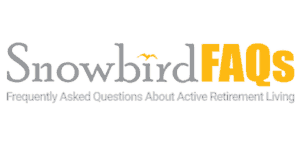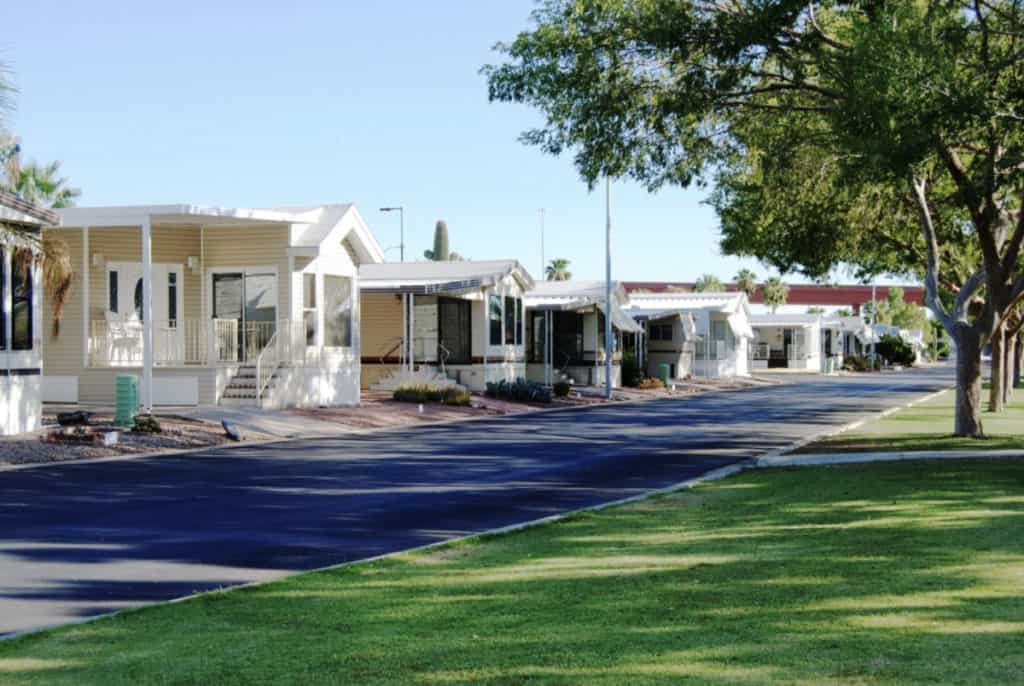
If this is the first time renting out your home for the winter months and looking for some advice, then you’ve come to the right place. Renting your home doesn’t have to be stressful. Read on for some tips on how to make renting a breeze!
Renting your park model while you’re not there can take some preparation. From making sure you have the proper insurance, preparing a rental agreement, finding a caretaker or property manager, to equipping your home with necessities and making sure everything is in working order can feel like a daunting task. But once you’ve done this a few times it will become second nature.
I guess you could say we have a bit of experience when it comes to renting as we have rental properties back home. But when we were considering renting out our Arizona Park Model during the time we weren’t there, we realized we were new to the laws of Arizona and Park Model living.
CHECK WITH YOUR PARK ON THE DO’S AND DON’TS FIRST
Your Resort Park may have certain rules and regulations around renting that you’ll need to consider, so check with them to find out what they are, if any. Some parks have a rental program and want you to go through them and they will rent it out for you, which can have its advantages and disadvantages. And some parks leave it up to you.
If your park is one that wants you to go through them, this could take all the pressure off when it comes to the ‘not so fun stuff’ like finding a renter, collecting money, signing a lease and worrying about maintenance while you’re gone. The park will take care of all that for you for a small fee. The park will take around 15% off the top of your earnings so keep this in mind.
DID YOU KNOW: There are 300,000 Snowbirds flocking to Arizona each year in the winter months, so there is never a shortage of renters. In fact, waiting lists are usually the case.
If you can rent it out yourself that is even better. It will put more money in your pocket and give you that sense of accomplishment you know you’ve always wanted!
Regardless of whether you rent it through the park or yourself it’s really not that hard. Just follow these steps below:
8 STEPS TO PREPARATION AND SUCCESS
#1 DO I NEED TO CLAIM THIS INCOME AND HOW?
NOTE: We’re not lawyers, just have some experiences we’d like to share on the topic. Be sure to consult a registered lawyer in the jurisdiction you will be doing this business in before doing anything. Also consult with a qualified accountant and/or tax lawyer regarding tax issues.
No one likes to talk about the dreaded word TAXES! There are at least two ways you can file your taxes. One being a Nonresident Gross Tax rate or the Graduated Net Tax rate.
Non-Resident Gross Tax rate – According to the IRS in the United States, you do need to report any income you receive on a non-primary or vacation home when receiving rental income for more than 15 days in a tax year. You will be taxed a flat 30% on the gross rental income and does not allow for any expense deductions.
Snowbirds should report rental income to the IRS on Form 1040-NR (link to IRS 1040 NR Form). In order to file your taxes in the US you will also need a US Taxpayer ITIN Identification number IRS W-7 Form (link to IRS W-7 Form).
Graduated Net Tax rate – There are ways to reduce the amount of tax you pay to the IRS and that allows you to deduct expenses, however, the IRS considers it to be engaging in a trade or business if the activities are regular, continuous and substantial. In other words it gets a bit more confusing but may be well worth it if you intend to rent more than just a couple months a year. In this case a W-8ECI form (link to IRS W-8ECI form) must be filled out.
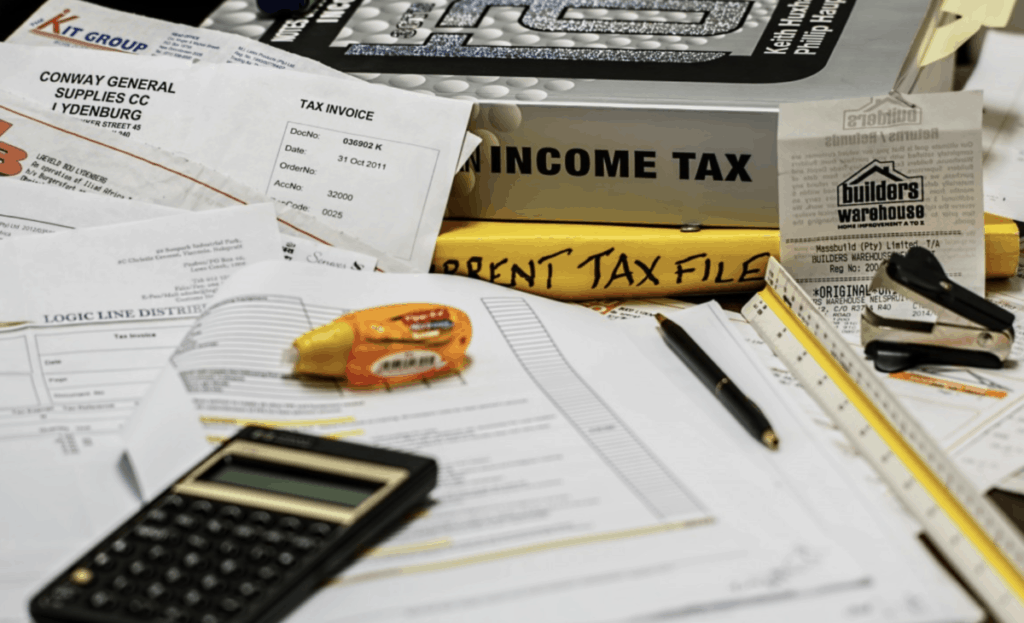
For more information on how and why you need to report this income, see the simple explanation and examples on the two options mentioned above in the Deloitte Taxation for Foreign Nationals guide (link to Deloitte Taxation guide), pages 22-24.
And according to the Canada Revenue Agency (CRA), if you are Canadian, you need to report any income earned in the US even if it’s fewer than 15 days. On the bright side, Canada will offset the tax owing in the US by giving you foreign tax credits which will offset US taxes and help to avoid double taxation. For more information on how to report on your Canadian taxes click here CRA Foreign Tax Credit (link to CRA Foreign Tax Credit). Again, we’re not accountants and lawyers so be sure to check all this with you accountant and lawyer.
Note: Ideally you should complete the IRS income tax return before you file your Canada taxes in order to determine the foreign tax credit that you can claim.
#2 PEACE OF MIND – HAVE INSURANCE
One of the most important things to know when renting in the US is having the proper insurance. You want to be sure that both you and your winter home are covered on all accounts, especially when renting. Little trips and falls by renters or guests, or an Arizona sand storm can leave you in a bad way if you are not covered. So be sure to have the appropriate insurance coverage.
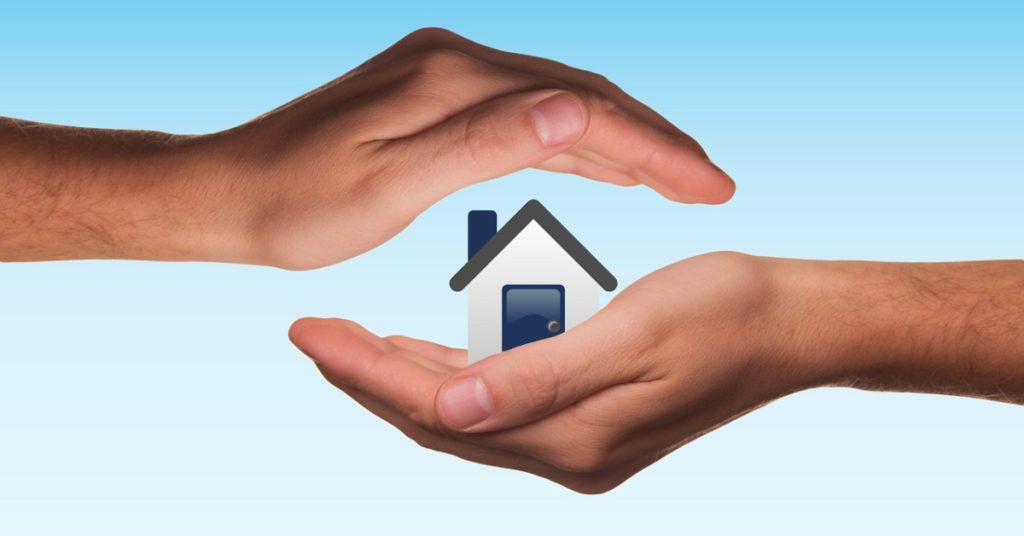
There are two options of coverage you can get and that being a regular Homeowner’s policy or Landlord’s insurance policy. However Landlord insurance may not cover Personal Liability and only covers when it is being rented out, so you may be better off to stick with the Homeowner’s policy that will cover you year round. For about $200 – $400 annually, and based on the value of your home you can get the following coverage:
- Property Damage – this will cover physical damages to your property that may be caused by nature such as rain or sand storms.
- Personal Liability – this will cover legal and medical expenses should your tenant or one of their guests get hurt while on the property.
Consult with you insurance agent and consider an appropriate coverage amount.
#3 MAKE YOUR HOME READY
Now is the time to make your home ready for Renters. You want your renters to love your home and want to come back, so you need to make it inviting. This means making it clean, cozy, and in good working order such as lights, TV, washer/dryer, taps etc..
The last thing you want is a call from your new Snowbird renters on the first day of their arrival letting you know something isn’t working. It’s disheartening to both you and them. After all, they want to enjoy their stay without worry and YOU want to make a good impression for repeats.
THINGS YOUR RENTERS WILL APPRECIATE:
- De-personalize your space – Unless you have relatives or close friends renting then its best to remove your family photos, keepsakes and anything personal you don’t want them using. Store these items in a secured locked area.
TIP: You may want to purchase a hydraulic lift bed frame with under storage where you can put a small safe, personal belongings and extra bedding.
- Have extra sets of linens (sheets and towels) that are for renters only.
- Keep a binder or hang a list on a cork board with all the information in the home such as WiFi passwords and electronics instructions.
- List emergency contacts and important contacts in the park they should know about. Most parks have a Park directory and contact numbers you can have available.
- Have a list of restaurants near buy and things to do or places you’ve been and experienced so they have a first-hand review.
- Have a spare set of keys hanging with the park pass so they don’t have to search around.
- Be sure to communicate or have clear instructions in a visible place with what they should do with the keys and passes if you are not there to greet them or when they leave.
- Remove personal vehicles from the driveway and carport.
- Be sure to leave your contact email, text message, and phone number easily accessible in case they need to contact you for any reason.
In addition to the above, renting out your Park Model for the winter months (or summer if anyone is brave enough to endure the heat), having a fully stocked home with essentials is necessary. All they should have to bring is their clothes and food. Check out the attached list of ‘Must Haves’ (click here) in your home. We call it a List of Necessities for those of you preparing to rent out your trailer. It will also give renters some expectations too.
#4 HOW MUCH DO I CHARGE FOR RENT?
Rental prices can vary widely from park to park and can be tricky to determine. Prices can depend on a couple factors such as the size of the park and what you have to offer.
If you are in a larger park and paying higher pad fees, have more amenities than some, and 24 hour security, then you are going to be able to charge more for rent overall.

When determining price in relation to park size, a general guideline is: Small park prices would range from $,1,000 – 1,500 US per month; Larger park prices would range from $1,500 – $3,100 US per month
Some parks (usually larger ones), and especially those that have a rental program, will categorize the available homes for rent into different price points as shown below.
LARGE PARK – PRICING AND CATEGORIES (these are only guidelines):
Standard Park Model $1,500 (older unit but in good condition, one bedroom, one bathroom)
Mid-Range Park Model $2,000 (older with upgrades in good condition, one bedroom, one bathroom)
Standard Park Model w/Arizona Room $2,300 (older unit with upgrades, one bedroom, one bathroom) Deluxe Park Model $2,300 (newer unit, one bedroom, one bathrooms)
Mid-Range Park Model w/Arizona Room $2,600 (older with upgrades, two bedroom, two bathrooms) Deluxe Park Model $2,600 (newer unit, two bedrooms, two bathrooms)
Deluxe Park Model on Golf Course $2,900 (new unit, two bedrooms two bathrooms)
Supreme Park Model $3,100 (new manufactured home, two bedrooms two bathrooms, double wide)
In addition to the monthly rental amount you should include a damage deposit. But this is completely up to you. If they are friends or relatives you may not feel you need to ask for one but highly advised if they are strangers. Deposit amounts are really up to you and can range anywhere from $500 to one month’s rent. The Deposit is usually collected upon signing of the contract or with the first month’s rent. It shall be returned to the renter within 7 days of vacating the premise, and after an inspection.
#5 HOW WILL I FIND A RENTER?
Finding a renter isn’t so difficult. With Snowbirds flocking to Arizona at a steady rate each year, there is no shortage of renters. The ideal situation is finding someone who wants to rent for three months at a time, and chances are during high season from January to the end of March you are likely to find just that. However, even a month at a time would be great! Most parks don’t even allow weekly rentals during the high season.
TIP: Snowbirds are higher quality tenants and are more likely to have the money to spend.
THERE ARE MANY WAYS TO FIND A RENTER:
- Begin by asking or letting family, friends and neighbours both in your home town up north and in your trailer park know that you have a place for rent and chances are ‘someone knows someone’ who is thinking of going south for the winter. Word of mouth is a powerful source. It can also give you peace of mind with it being a friend of a friend rather than a complete stranger.
- There is usually a place in the park like the office or activity centre where you can hang up postings for your rental. That way someone in the park who is looking for a rental for their relative or friend can go there to find your ad.
- Some parks have a Facebook members site that you can post your ad, or the Park itself may have a spot on their webpage they use for rentals. Although these are usually the parks with a rental program and would be handling this for you.
- If you are trying to sell your unit, there are some realtor sites that will advertise your park model for rent until it sells.
- And last but not least you can advertise on Kijijji, Craig’s List, Airbnb or Vrbo
TIP: Use your Park’s Facebook buy and sell site. We know of stories of people doing just that within hours a neighbour down the block came and rented it for a sister that was looking. As well, a cousin’s cousin was also looking for a place and they reached out to the owner. Just by luck it worked out that she was able to accommodate both.
MAKE YOUR LISTING STAND OUT
If you want people to notice your ad or choose your place over someone else’s, you want it to show well.
- Have good quality photos of all the rooms and don’t leave them guessing what the bathroom might look like.
- Make a video so they can see everything as if they were there.
- If writing an ad, even if just on a piece of paper for the bulletin board, make sure it is detailed. Just putting your name and number may not attract anyone if they don’t have a visual from the details. And putting little effort into your ad may give some indication as to the effort you put into your home. Give specifications on how many rooms, upgrades, the price, and does it include the golf cart? If you can, include a picture or two would be great! The ad doesn’t have to be more than a half to one full page.
TIP: Use your cell phone or camera to take a video of your place and the park itself and upload it to youtube then email out a link of the video for others to know exactly what it is like.
BE SURE YOUR RENTER IS TRUSTWORTHY
If you don’t know your renter, you will want to have a criminal record check and a credit check done.
A Criminal Record check can easily be done in the US (link to Public Records Search Service) and Canada (link to RCMP Criminal Record Check) online in minutes. All you need is their name and city.
A Credit check can also be done in minutes. There are online services such as TransUnion, Equifax or AmerUSA that will do tenant screening for credit and background for a small fee of $5 to $25.00 depending on what’s included.
If you don’t feel comfortable asking for a credit check, and some people may not allow one as they will have to provide their SSN or SIN number, your best option is to collect full payment upon signing the contract. Make sure it clears the bank fully (cleared past the check hold period often 5-10 days).

#6 SIGN A CONTRACT
The purpose of a rental contract is to cover details like full names of the owner and renter(s), rental and deposit amounts, check-in and check-out dates and times, and any rules of the property such as the do’s and don’ts and expectations.
You want to be thorough and cover as many details as possible. A rental contract is much like insurance and can save you from problems later. Below is a general list of some things you’ll want to be sure to include in your Rental Contract. You can also find examples of contracts online and make it your own. Begin with:
- The Date the contract is signed
- The address of the premise the tenant agrees to rent
- Owners name(s)
- Renters name(s)
- State the rental term from when to when (include the date of the check-in and check-out), and the time of check-out. Tip: Noon is a good time and allows for cleaning after
- State the security deposit and give the amount to be paid, the date to receive payment, and method of payment. Here is where you want to state that the deposit shall be returned less any damages incurred and when it is expected to be returned to them.
- State if pets are allowed and give details on non-refundable pet deposit any rules you want to include surrounding pets.
- State who is to pay the Utilities or if they are included in rent
- State who is to handle maintenance should something go wrong and give a contact
- State specifics about use of the golf cart
- Let the renter know their personal belongings are not covered under insurance
- State they should abide by the park rules and regulations
- State they should leave the unit tidy and take out garbage
- Give instructions on what to do with the keys
PETS – Some renters will have a pet, and as long as your park allows pets, it’s up to you to decide if you want to allow them in your home. If you do, we recommend that you collect a non-refundable pet deposit of around $200. Prices vary per person. This deposit could cover added expenses such as extra cleaning needed due to the pet, once your renters leave. Be aware, and make your renter aware, that noisy pets are grounds for renter removal from the park and no refunds will be provided if that happens.
GOLF CARTS – As many Park Model owners have a golf cart, it’s a nice added feature if you allow your renter to use the cart while they are there. In the event you let them use the cart be sure to have them sign a golf cart waiver. This waiver puts clear restriction on the use of the cart and ensures they understand that they are legally responsible for any damages to the cart, property, or persons and they must have appropriate insurance to cover this. You can also mention additional conditions in the rental agreement pertaining to the golf cart. For instance where you’re just ‘throwing in’ the use of the cart rather than charging for it you may want to state, that if it breaks down and costly repairs are needed during their stay, then it may have to be parked for the duration. That way you can determine if you want to pay for the costs at that time or wait until later.
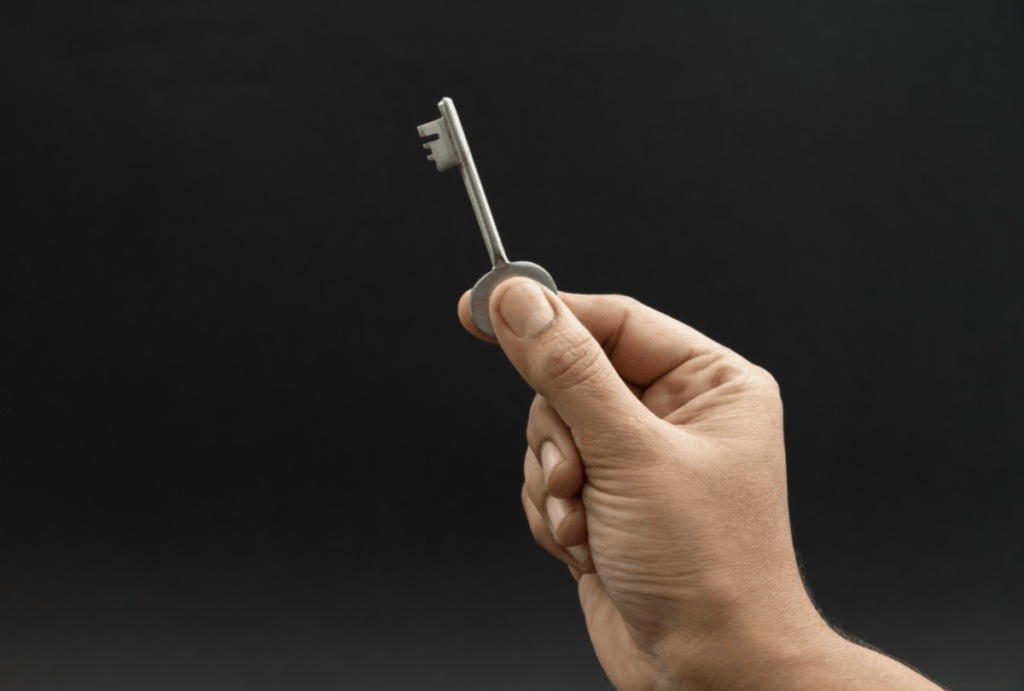
#7 HOW DO I COLLECT THE MONEY?
Before you do any collection of money you will want to have a US bank account set up if you are a non-resident to the US. However, chances are you have already done this at the time of purchase and most parks require this for payment of pad fees and other miscellaneous park fees such as utilities.
Collecting the rent is really up to you and whether or not you will be there to meet your renter in person. There are several ways to make the transaction simple.
COLLECTING PAYMENT IN PERSON
If you plan to be at your home to greet them when they arrive you can simply take payment from them at that time in the form of cash or cheque and then deposit it to your US bank.
RECEIVING DISTANCE PAYMENT
BY MAIL – If you are not in the same city and will not be seeing your renters prior to check-in, have them mail a cheque to your home address well in advance of their arrival. If the renter is Canadian or other than US resident, be sure the funds are in US dollars or equivalent. If possible, if they have used an exchange rate in payment have them attach an exchange rate confirmation on the day they withdrew the funds.
If they are renting for more than one month, you will want to decide if you prefer payment on a month to month basis or all up front. You can ask their preference as some may not be able to give it all up front and may need to make payments. In that case it is best to ask for post-dated cheques to be mailed at the same time for convenience and assurance.
Once you receive the cheques you can go to your local bank and they should be able to deposit the funds into your US account. If you’re a non-US resident keep in mind there will be a transfer fee for this.
E-TRANSFER – In Canada, e-transfering is a breeze and this can be another option if the renter is comfortable with sending payment this way. However depending on the amount, they may have to make a few transfers as most banks have a daily limit on how much you can send. You will then need to transfer funds into your US account.
PAYPAL – One other method that is becoming more popular is PayPal. This allows the renter to put the amount on their credit card or bank account debit, which means they are more likely to make the full payment up front for multiple months. Setting up a PayPal account (link to PayPal Signup) is extremely easy and all you need is an email address or mobile number. Be aware that both parties will need a PayPal account to send and receive payment.
#8 HIRE A CARETAKER OR PROPERTY MANAGER / CLEANER
It’s nice to know that when you are away you have someone to take care of your property and give you peace of mind.
If you can’t be there to meet and greet you renters, you may want to hire a caretaker, cleaner or even neighbour to be there to hand over the keys and monitor your home before and after.
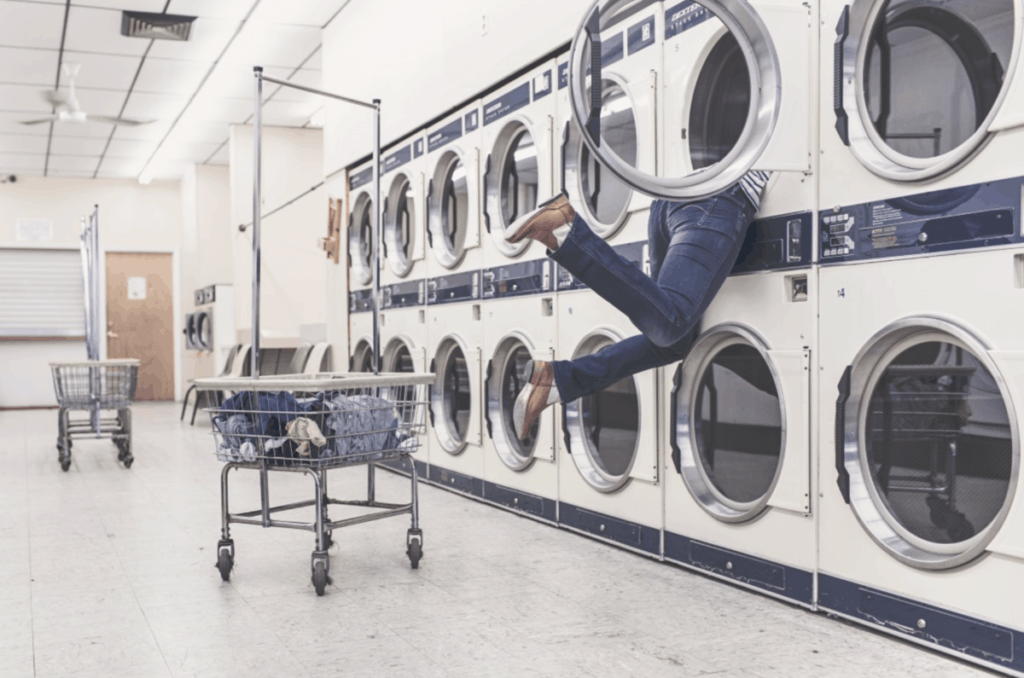
CLEANING PERSON
Since you’ll need someone to come in and clean before and after anyway, you can ask them to do the key exchange at the same time. They are also a good one to monitor for any damages or general wear and tear. Offer to pay them a little extra for this service.
CARETAKER
A caretaker will handle general maintenance or arrange for a contractor on your behalf, should the need arise during the rental period.
All parks have a list of caretakers that live right in the park and outside the park that you can hire for as little as $10-$20 a month. It’s insanely cheap! Ask around though for referrals and get a good one.
TIP: Have a safe and secure hiding spot outside for the keys and inform the renter, caretaker and cleaner of the location.
CONCLUSION
Believe me, reading this list sounds overwhelming to anyone, including me, and you’re probably wishing someone could do it all for you! Well, it just may be worthwhile to have your park do some of the heavy lifting and you do the rest. Just do one step at a time and before you know it you’ll have renters enjoying your Park Model in the Arizona heat and it will be all worth it!
